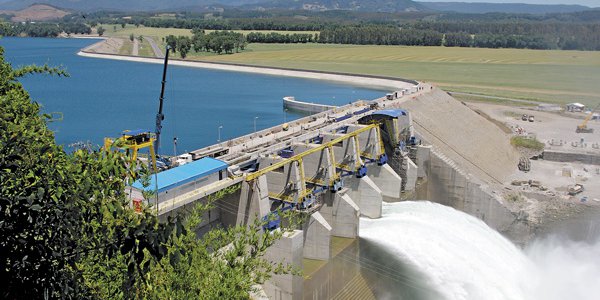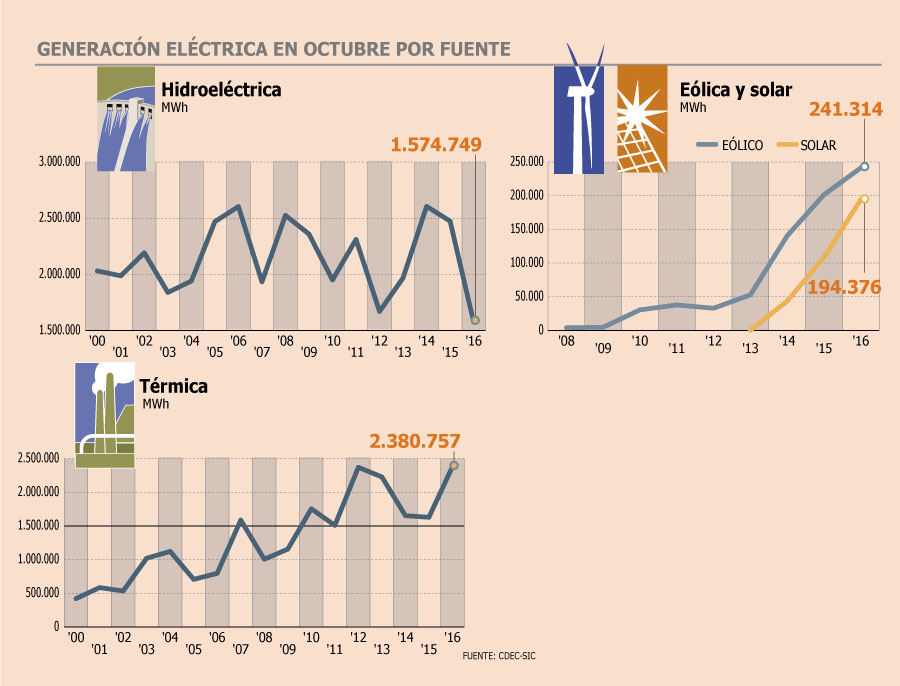
Experts point out that this could be one of the driest years on record for the electricity sector.
Hydroelectric generation recorded worst record in 16 years and drought deepens
A historically dry year is playing against hydroelectric generation in the country, which in October set its worst record in 16 years for this month.
Electricity from run-of-river and reservoir power plants registered 1,574 GWh in the Central Interconnected System (SIC) in October, the lowest figure since 2000, according to data available from the Economic Load Dispatch Center (CDEC).
In October, the energy generated by this type of power plants was 36% lower compared to the same period last year, lowering its share in the energy matrix from 56% in October 2015 to 36%.
The reason? The low rainfall this year points to this being one of the driest seasons in history. So far in the 2016-2017 hydrological year, which runs from April to November of this year, the surplus levels for the country’s main basins exceed 90% and even reach 98% in the case of the Laja River. This means, in the case of Laja, that only 2% of the statistical years would be drier than the current one, according to CDEC-SIC data.
“October’s hydro generation was the lowest in many years due to the fact that we are in a particularly dry year,” explains Ana Lía Rojas, an economist specializing in the electricity market.
“In terms of hydrology, we are at a P95, which means that this year 95% of all hydrological statistics, have been wetter years,” he adds.
Francisco Aguirre, executive director of Electroconsultores, is categorical in explaining the lower hydroelectric production and affirms that “the only factor is only nature”, that is, a lower amount of precipitation in the period from April to August, which has had an impact on lower snowmelt for the season starting in September.
“The snowmelt or snowmelt regime that we find now depends on the level of snow that has accumulated. Measurements already indicated in October that the level would be low, therefore, little water. That is why we have a low hydroelectric contribution,” he said.
María Isabel González, general manager of Energética, states that this has been a very dry year, particularly in the southern zone where the largest number of hydroelectric power plants are located.
“It is purely the effect of hydrology, that is, less water availability because there was not much snowmelt. That has marked low hydro generation,” he said.
Rodrigo Jiménez, general manager of Systep, also warns of the low level of precipitation that has accumulated. “This year, with the data we have so far, presents a 95% surplus, although there are 5 months left to include. This means that it would be one of the driest years in the records of the electricity sector dating back to the 1960s,” he says.
It points out that this low level of water resources for generation causes the CDEC-SIC to optimize generation from reservoir power plants, and therefore, other sources of generation to become more relevant.
Negative scenario
The water outlook for the coming months is not optimistic either. In its third snowmelt forecast commissioned by CDEC SIC and corresponding to last November, it warns that average snow conditions are expected for the northern basins, but an “almost non-existent snow cover” for the southern zone, where the main hydroelectric generators are located.
“It should be noted the conditions observed from the Maule River basin to the south, where both the observed precipitation and the satellite images of snow cover and snow control, make us foresee extremely dry conditions for the current snowmelt season,” the document says.






